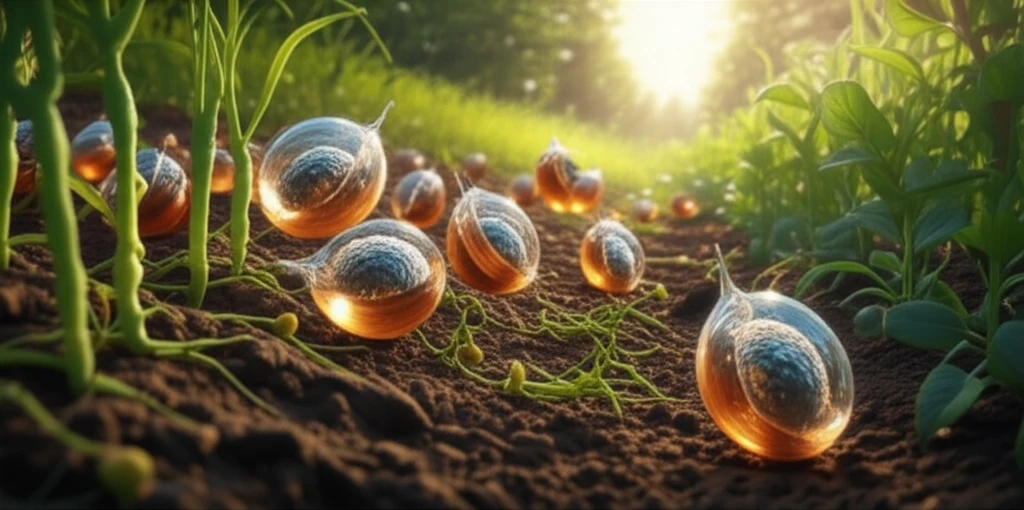
Unlock Seed Potential: Chitosan-PEG Films Boost Growth and Fight Disease
"Harnessing the power of nature: How chitosan-PEG blended films enhance seed quality and antimicrobial defenses for healthier crops."
In agriculture, the quality of seeds and related inputs is paramount for ensuring high crop productivity. Despite numerous technological advancements, poor seed quality remains a significant cause of crop losses. Beyond the genetic and physiological aspects, seeds often face biotic and abiotic stresses that hinder optimal yields. Seed treatments, including soil amendments and antimicrobial agents, are crucial for protecting against these challenges.
Traditional methods involve chemical agents, but there's a growing shift towards biological solutions. These biological agents offer an eco-friendly alternative, harnessing beneficial microbes to combat harmful crop pests and promote sustainable agriculture. This approach not only reduces environmental impact but also enhances the natural defenses of plants.
Among the various biological agents, Trichoderma species stand out for their biocontrol properties. These fungi colonize plant roots, produce secondary metabolites, and trigger defense responses against biotic and abiotic stresses. Now, researchers are exploring how to combine the benefits of Trichoderma with natural polymers like chitosan to create innovative seed coatings that further enhance plant health and productivity.
Chitosan-PEG Films: A Natural Defense for Seeds

Chitosan, derived from crustacean shells and fungal cell walls, has demonstrated significant antimicrobial activity against various pathogens. When applied as a seed treatment, it acts as a resistance elicitor, enhancing the plant's natural defenses. Combining chitosan with Trichoderma creates a powerful synergy, improving seed viability and germination under stress conditions.
- Enhanced Antimicrobial Activity: Chitosan inhibits a wide range of pathogens, protecting seeds from soilborne diseases.
- Improved Stress Tolerance: PEG acts as an osmoprotectant, helping seeds withstand moisture stress and environmental challenges.
- Synergistic Action: The combination of chitosan and Trichoderma creates a protective microenvironment around the seed, promoting germination and plant growth.
Future of Seed Treatment: Sustainable Solutions for Agriculture
The chitosan-PEG blended filmogenic solution, enriched with Trichoderma, presents a sustainable alternative to traditional seed treatments. This innovative approach utilizes natural materials to enhance plant defenses, promote growth, and protect against disease.
The polymers in the film provide a uniform coating that modulates gas exchange and water vapor transmission, ensuring optimal germination conditions. Furthermore, the blend is compatible with Trichoderma, supporting its sporulation and activity during seed germination.
Ongoing studies are exploring the long-term shelf life and efficacy of this chitosan-PEG-Trichoderma combination. These advancements pave the way for sustainable agricultural practices, reducing reliance on synthetic chemicals and fostering healthier, more resilient crops.
